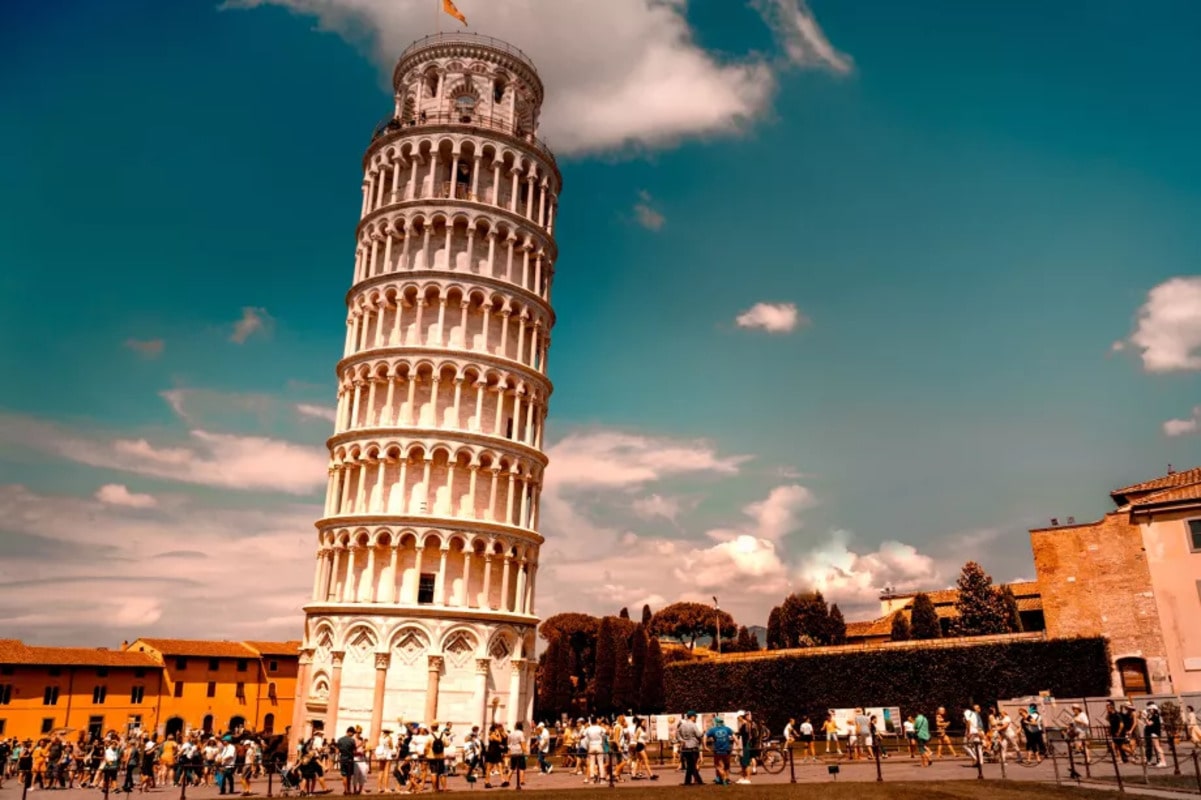Pisa is one of the most famous cities in Italy, attracting millions of tourists each year with its remarkable architecture, rich history, and cultural heritage. While most people associate the city with its iconic Leaning Tower, Pisa has much more to offer. Its medieval buildings, academic traditions, and maritime legacy make it a fascinating and multifaceted destination. Below are captivating facts about Pisa that you may not have known before.
- Pisa was founded in ancient times and served as an important maritime port during the Roman Empire. In the Middle Ages, it became one of the four great maritime republics of Italy, alongside Genoa, Venice, and Amalfi.
- The city’s most famous landmark is the Leaning Tower, which began to tilt during its construction in the 12th century. The tilt was caused by unstable and soft ground that could not support the weight of the massive structure.
- The tower is part of the architectural complex known as the Piazza dei Miracoli, or Square of Miracles, which also includes the cathedral, baptistery, and Camposanto cemetery. The entire complex is a UNESCO World Heritage Site due to its artistic and architectural significance.
- The Leaning Tower stands about 56 meters tall and leans at an angle of several degrees, making it one of the most photographed landmarks in the world. Numerous efforts have been made to stabilize the tower while preserving its iconic tilt.
- In the 13th century, Pisa commanded a powerful navy and established colonies throughout the Mediterranean. It controlled important trade routes to Sardinia, North Africa, and the Balearic Islands.
- Pisa is the birthplace of the renowned scientist Galileo Galilei. According to legend, he observed a swinging chandelier in the Pisa Cathedral, which inspired his early studies on the motion of pendulums.
- The University of Pisa was founded in 1343 and is one of the oldest universities in Italy. Its alumni include prominent scientists, writers, politicians, and Nobel Prize laureates.
- The Baptistery of Pisa is the largest in Italy. Its architecture blends Romanesque and Gothic styles, and it is renowned for its exceptional acoustics, making it ideal for vocal performances.
- The Piazza dei Miracoli holds not only architectural but also symbolic religious significance. It represents the cycle of life: birth (baptistery), life (cathedral), and death (cemetery).
- Pisa is home to many medieval churches, some of which are located off the main tourist paths. For example, the Church of San Paolo a Ripa d’Arno is older than the Pisa Cathedral itself.
- The Arno River flows through the city, dividing it into two parts. Along its banks are picturesque streets and squares that preserve the timeless atmosphere of old Tuscany.
- Pisa has a vibrant student population, with about one-quarter of its residents being university students. This creates a lively and youthful energy that blends harmoniously with the city’s historical elegance.
- One of Pisa’s most enchanting traditions is the Luminara di San Ranieri, celebrated on June 16th. On this night, thousands of candles illuminate the riverside buildings in honor of the city’s patron saint.
- Pisan cuisine reflects its maritime roots. Popular dishes include bean soup, stewed octopus, fish with vegetables, and castagnaccio — a traditional chestnut flour cake.
- Pisa is served by Galileo Galilei International Airport, which connects the city with numerous European capitals. This makes Pisa easily accessible for travelers from around the world.
- The city is also home to historic botanical gardens, the oldest of which was founded in the 16th century. Operated by the University of Pisa, these gardens are open to visitors and serve educational and scientific purposes.
- Although Pisa is smaller than some other Tuscan cities today, its historical and cultural importance remains immense. The city played a vital role in the development of science, navigation, and architecture.
Pisa is far more than just a leaning tower. These fascinating facts reveal the depth of its scientific, maritime, and cultural legacy. The city embodies the spirit of the Middle Ages, the pursuit of knowledge, and the timeless beauty of Tuscany. Pisa has the power to surprise and inspire every traveler who visits.





